Looking for seriously fun science, technology, engineering, and maths news for your curious kids or tech-talented teens? We've got you covered! Inside every issue you'll find articles, activities, puzzles, comics, and prizes galore. Perfect reading for enquiring minds, CSIRO's Double Helix magazine is packed with news, features, fun experiments, giveaways and more. Each issue focuses on a different theme, from smells to spaceships and beyond! With clear language and eye-catching design, the content promotes critical thinking, strengthens literacy skills and is the perfect fuel to spark or sustain an interest in STEM. Double Helix is published eight times a year. It is ideal for 8 to 13-year-olds and enjoyed by older readers as well.
Double Helix
HELIX HQ
ON THE DOUBLE
THE FUTURE OF FABRIC IS COOL
TUNING IN TO REEF RESTORATION
GET TO KNOW GJ 367B
PONDER UPON HIPPO POO
TO SAVE MOTHS, DIM THE LIGHTS!
CHINA’S FEATHERY FOSSILS
ACIDITY AFFECTS OCEAN LIGHTS
BY THE NUMBERS: ANCIENT WORLDS
'BEARLY' THERE
COOKING WITH HYDROGEN GAS
THE MAGIC OF MOONDUST
THIRD-HAND HYGIENE
HEALTHIER HONEY
FOSSIL EMBLEMS
UNDERWATER JURASSIC PARK • If you could be transported back 167 million years to the mid-Jurassic, the world would look very different. The poles were not covered in ice caps, the supercontinent Pangea was splitting apart, and the land was ruled by dinosaurs. England, now a land of dreary weather, was sub-tropical! It was also partly covered by the sea.
THE SECRETS OF OLD, OLD AGE • It’s the 28th century BCE. Stonehenge is being built, Ancient Egypt is still new, and in California, a bristlecone pine tree has just started to grow. Fast-forward 4,853 years, and that tree, nicknamed ‘Methuselah’, is still alive today. It might be the world’s most ancient living organism – but whether it is, or not, is actually a very complicated question.
PALEOVIROLOGY–HOW WE STUDY ANCIENT VIRUSES • We study dinosaurs and other extinct animals by looking for their fossils buried underground. Unfortunately, viruses are tiny and don’t fossilise like other ancient life, because they don’t have any bones or shells. So how do we study ancient viruses?
POSTER
THE FIRST SCIENTISTS: DEADLY INVENTIONS AND INNOVATIONS FROM AUSTRALIA’S FIRST PEOPLES
AUSSIE STEM STARS: JOHN LONG, FOSSIL HUNTER
TIME-TRAVELLING SHED
LIGHT ON EARTH • HELLO, HUMANS! GAIL LEXY HERE KEEPING AN EYE ON YOUR SKY.
CONTROLLING FERAL CATS • You might think of cats as cute, fun pets. And they can be, when they’re kept safely at home. But feral cats are ruthless hunters that kill more than 1.4 billion Australian native animals each year. To save Australian wildlife, we need to rein in these ferals.
THE AGE OF THE DINOSAUR • SOMETIMES THE BEST WAY TO FIGURE SOMETHING OUT IS TO GRAB A SCRAP OF PAPER AND DO A QUICK CALCULATION. SCIENTISTS CALL THESE ’BACK OF THE ENVELOPE’ CALCULATIONS. GET YOUR ENVELOPE READY!
WHAT’S YOUR QUESTION? • Got a weird and wonderful question about science, technology, engineering or maths? If you don’t know who to ask, let us help you out! We’ll find answers to the best questions and publish them here. EMAIL helix.editor@csiro.au TWEET @CSIROhelix #DHMicroscope
OLD SCHOOL
GLUE FOSSILS • FOSSILS OF PLANTS AND ANIMALS CAN TELL US A LOT ABOUT ONCE-LIVING THINGS THAT ARE NOW EXTINCT, AND HOW SPECIES HAVE CHANGED OVER TIME. HERE IS A WAY TO MAKE YOUR OWN FOSSILS USING WHITE GLUE.
TRY A TRILOBITE • CAST YOUR MIND BACK HALF A BILLION YEARS INTO THE PAST. SMALL, SHELLED ANIMALS CALLED TRILOBITES SCURRIED ACROSS THE OCEAN FLOOR. IN THIS ACTIVITY, YOU CAN MAKE YOUR OWN MODEL TRILOBITE!
WHY DO BOATS FLOAT? • EVER WONDERED WHY...
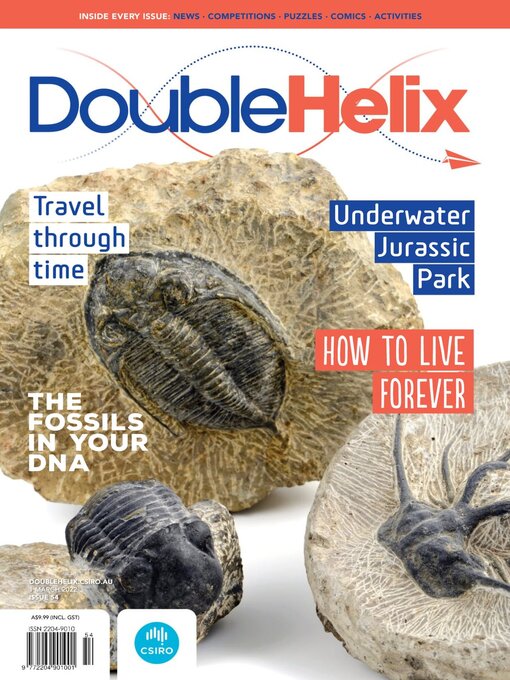
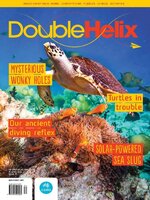 Issue 71
Issue 71
 Issue 70
Issue 70
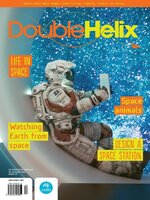 Issue 69
Issue 69
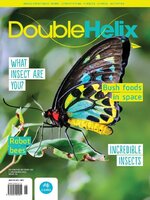 Issue 68
Issue 68
 Issue 67
Issue 67
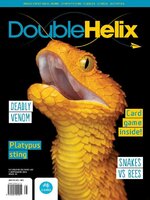 Issue 66
Issue 66
 Issue 65
Issue 65
 Issue 64
Issue 64
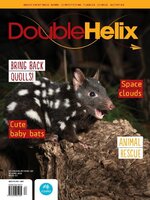 Issue 63
Issue 63
 Issue 62
Issue 62
 Issue 61
Issue 61
 Issue 60
Issue 60
 Issue 59
Issue 59
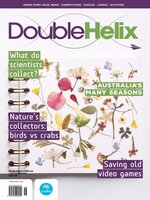 Issue 58
Issue 58
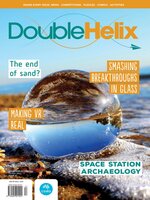 Issue 57
Issue 57
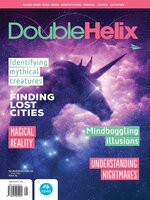 Issue 56
Issue 56
 Issue 55
Issue 55
 Issue 54
Issue 54
 Issue 53
Issue 53
 Issue 52
Issue 52
 Issue 51
Issue 51
 Issue 50
Issue 50
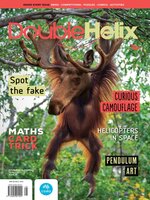 Issue 49
Issue 49
 Issue 48
Issue 48
